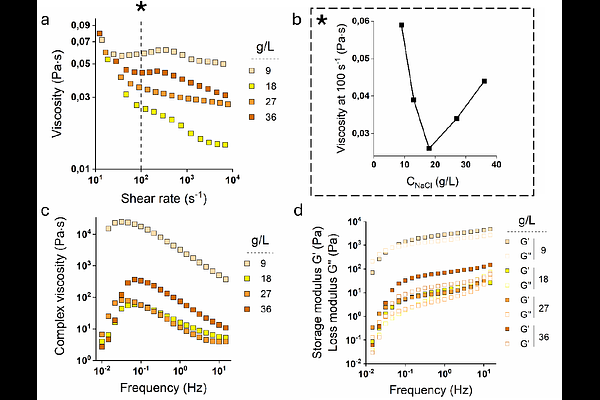Aqueous two-phase bioinks for discrete packing and compartmentalisation of 3D bioprinted cells

Aqueous two-phase bioinks for discrete packing and compartmentalisation of 3D bioprinted cells
Marcotulli, M.; Iacomino, A.; Serpe, F.; Iafrate, L.; Bastioli, M.; Montalbano, G.; Palmisano, B.; Franco, S.; Angelini, R.; Corsi, A.; Riminucci, M.; Ruocco, G.; Scognamiglio, C.; Barbetta, A.; Cidonio, G.
AbstractThe unparalleled ability of aqueous two-phase systems (ATPS) to reproduce microscale cellular and biomaterial compartmentalisation to selectively modulate cell behaviour and functionality is ideal for tissue engineering and regenerative medicine (TERM) purposes. Herein, we introduce new ATPS biomaterial inks for 3D bioprinting of water-in-water (W/W) emulsions, enabling precise cellular crowding for tissue regeneration in vitro and ex vivo. Gelatin methacryloyl (GelMA) was hierarchically dispersed in an alginic acid phase depending on sodium chloride (NaCl) concentration (0-36 g/L). Emulsion droplet size (12.8{+/-}2.6 m to 52.4{+/-}11.4 m) influenced degradation and spatial cell localisation (A549, C2C12, MG63). A microfluidic-assisted 3D bioprinting approach allowed fine-tuning of fibre structure adjusting ATPS deposition by modulating flow rates and printing speed. Rheological properties supported the findings of the two-phase partitioning, aiding the selection of the ATPS ink formulation for functional cell-laden construct fabrication. Encapsulation of C2C12 cells revealed enhanced cytoskeletal remodelling at higher salt concentrations. Increased GelMA phase promoted human bone marrow stromal cells (HBMSCs) crowding, mineral deposition and skeletal differentiation. In ovo studies demonstrated degradation control and vascular infiltration via salt modulation. Altogether, ATPS bioinks offer a versatile platform for the assembling of complex, hierarchical tissues with microscale precision, expanding biofabrication strategies for TERM applications.